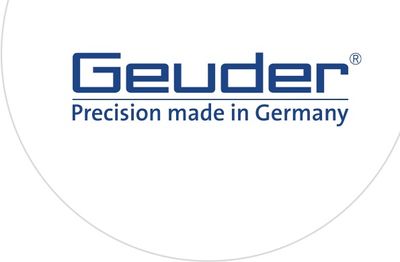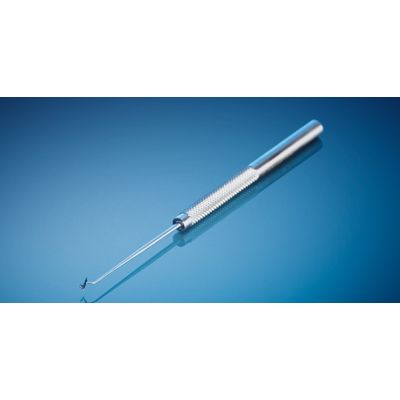


GEUDER - Model Homburg - Cross-Stitch Marker
The challenge in performing a penetrating keratoplasty (PK) is to place the sutures for donor cornea fixation in a way that no additional postoperative iatrogenic astigmatism is induced, preventing persistent vision deterioration. One option, which proved itself throughout the history of corneal transplantation, is to fixate the corneal transplant through a running cross stitch suture – the double running crossed diagonal suture by Hoffmann with 2 x 8 bites.As the name suggests, the challenges of this suture technique lie in the precision required to exactly place the stitches. In addition, the technique requires a precise visual estimate for gauging the dimensions, which is often associated with a shallow (long and tedious) training curve. Therefore the desired results are not always achieved.
The cross stitch suture marker by Suffo in the shape of number 7
Vertical visual mark (M1)of the arc and horizontal visual mark (M2) of thel ong side indicate the right radial alignment of the suture marker
Marking tips on both ends of the long side indicate the suture entry (B) andexit points (C)
- Precise marking of the needle entry and exit points
- Homogenous running cross stitch suture
- Highly reproducible
- Short training curve
- High safety for the surgeon through independence of visual estimate
- Neutral astigmatism
- Reduced risk of a vertikal tilt or horizontal torsion of the donor when suturing
- High topographic regularity (regular astigmatism)
- Low rate uf suture loosening
- Early visual rehabilitation
- Reduction of gaping inner and outer wound margins
- Reduced rate of suture repositioning
